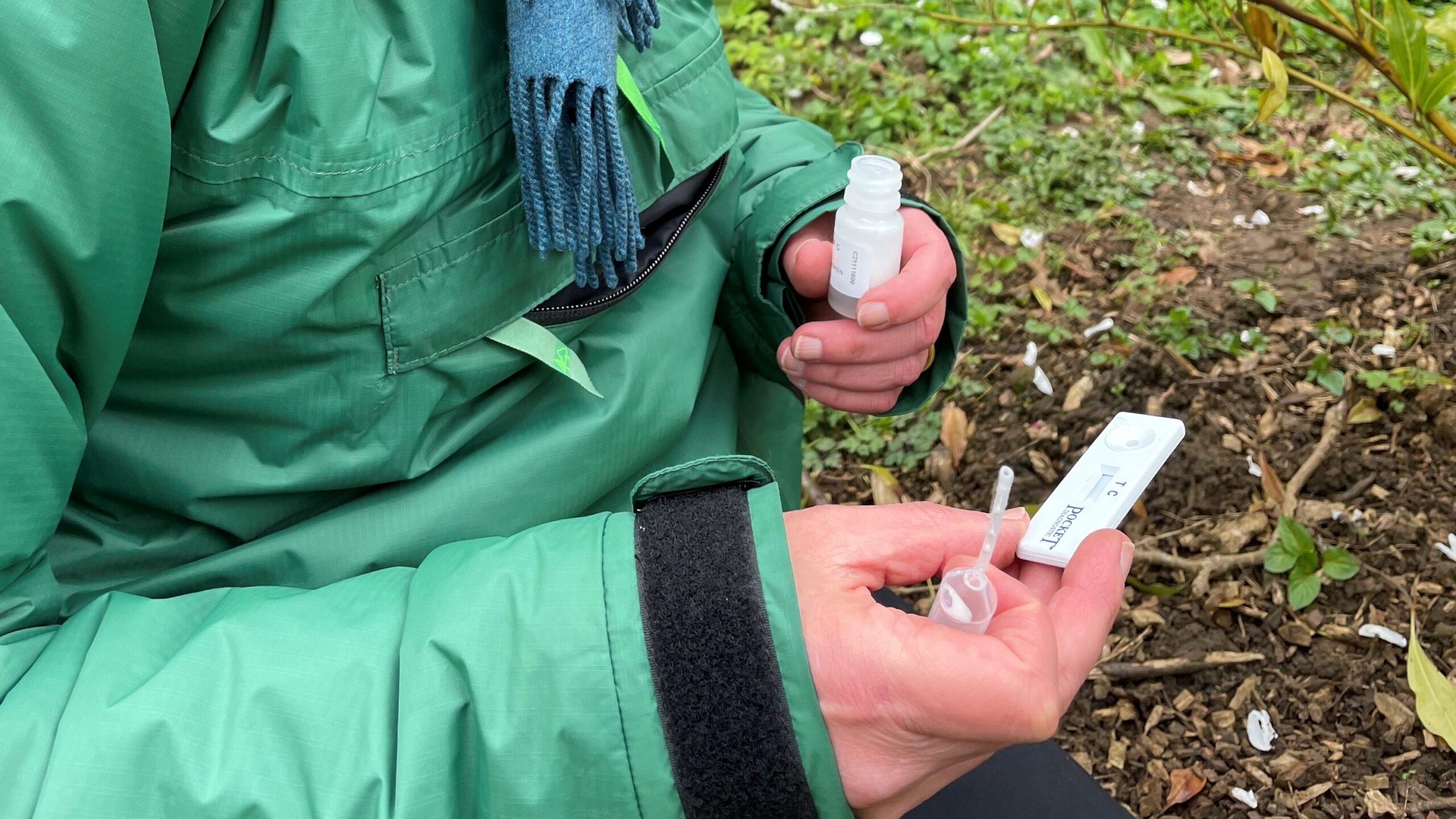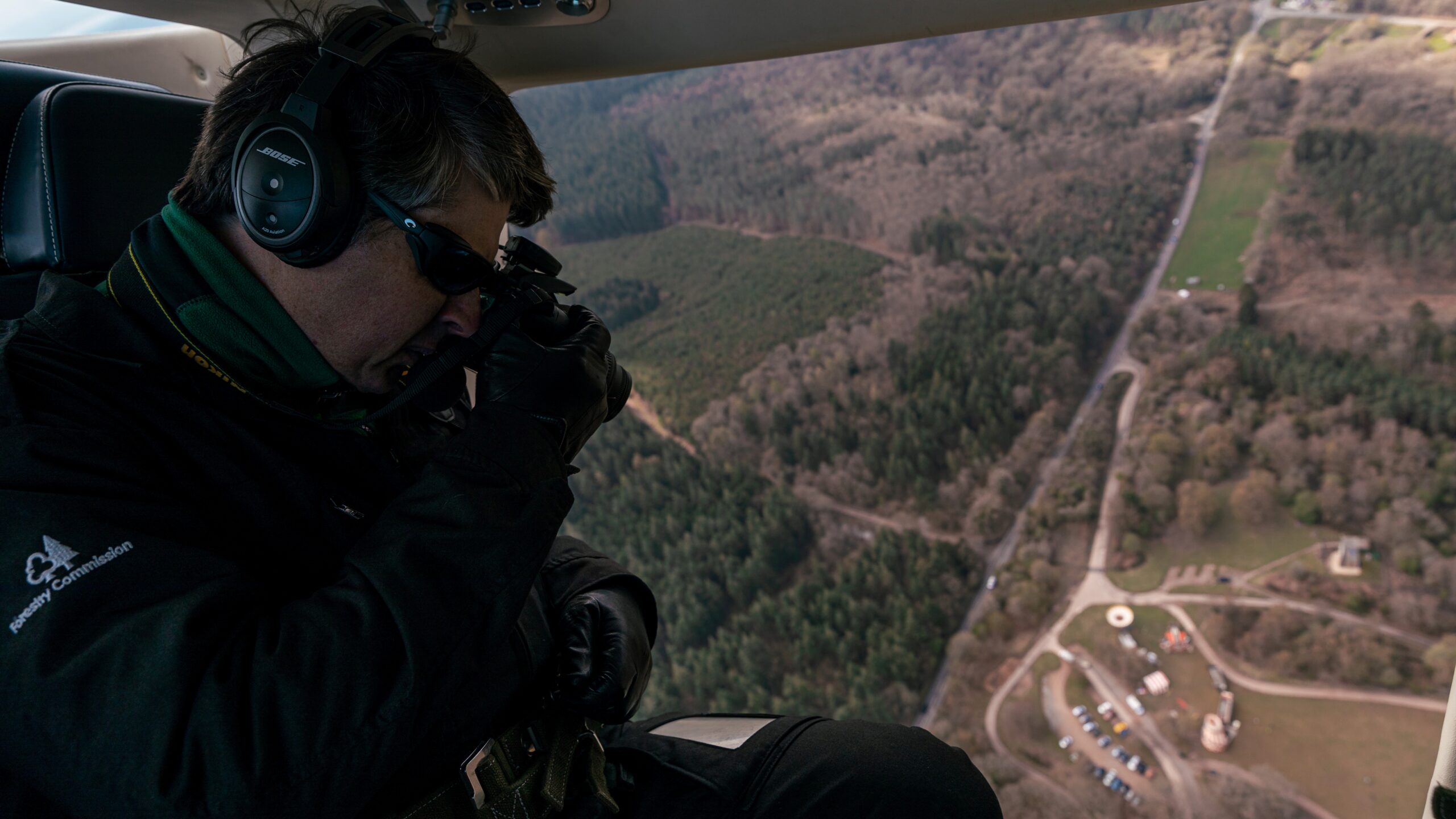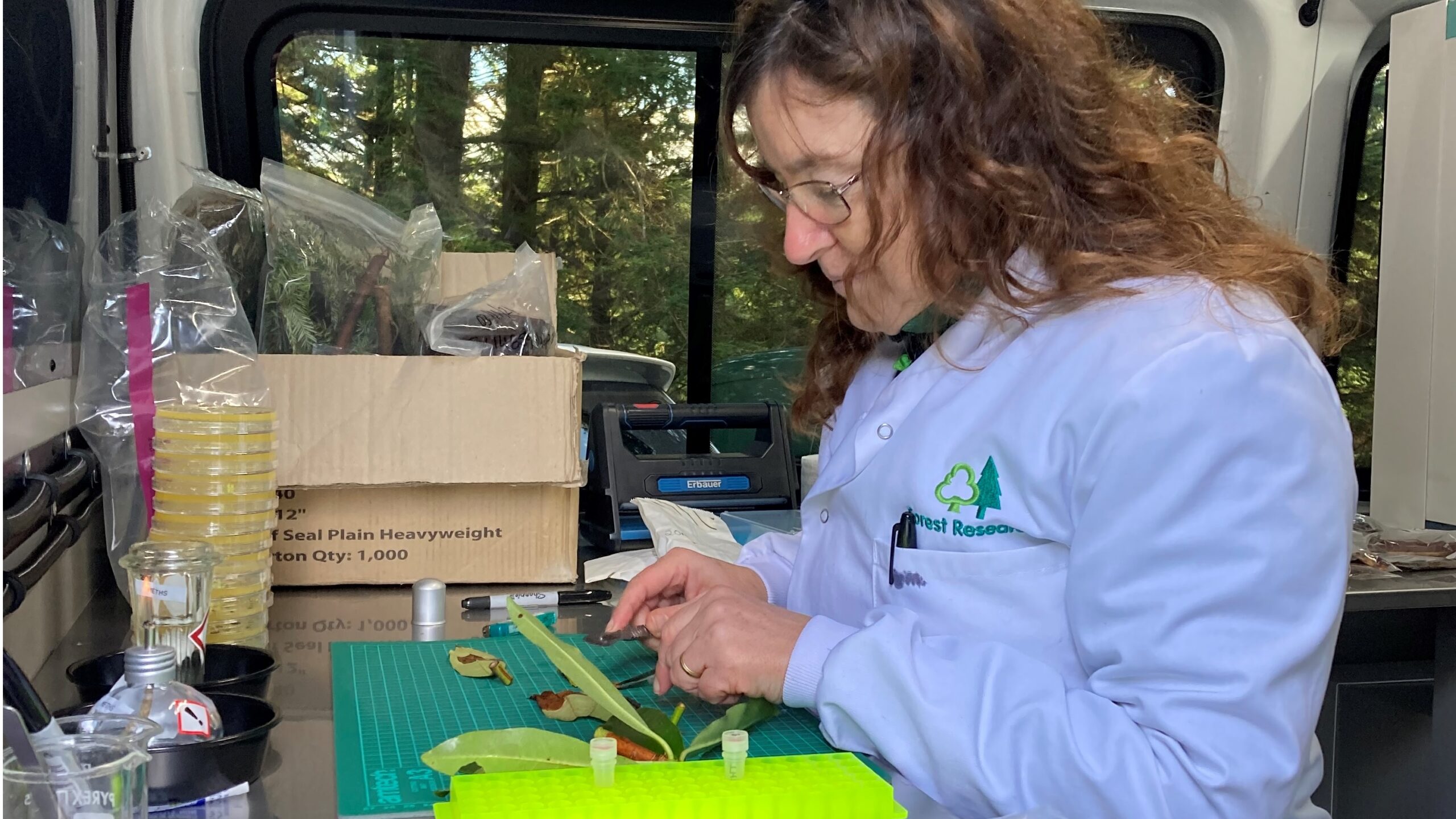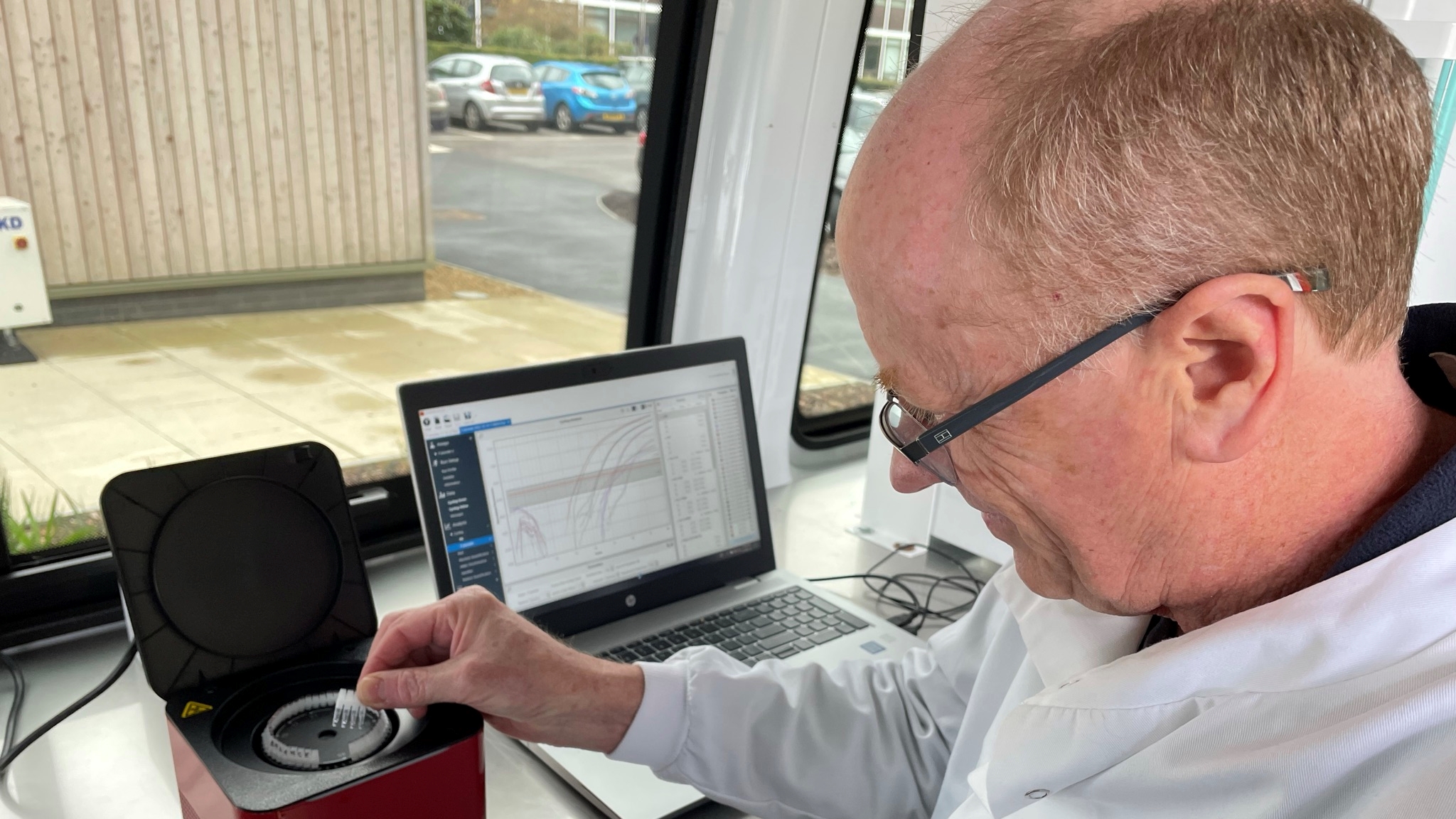Fighting Phytophthora – the plant destroyers
In recent times, foresters will have become all too familiar with the problems that Phytophthoras can bring. The name Phytophthora derives from Greek and literally means “plant destroyer.”
Here Dr Caroline Gorton from the Tree Health Diagnostic and Advisory Service at Forest Research reviews the different methods Forest Research deploys to track Phytophthora down. From PCR tests and baiting, to mobile labs on the ground and aerial surveillance, the hunt is on to protect our woodlands and forests.
Recent arrivals
For many years the only encounter some people may have had of Phytophthora would have been Ink Disease of sweet chestnut caused by P. cinnamomi or P. cambivora. However, since the early 2000s the number of Phytophthora species affecting forests has increased significantly. Species such as Phytophthora ramorum, P. pluvialis, P. lateralis and P. austrocedri are present in the UK and can affect a wide range of trees, having a significant impact on the landscape and the species choices available to foresters.

Pictured above: Lateral Flow Test for Phytophthora can be taken in the field. Credit Forest Research
Symptoms
Symptoms caused by these pathogens can include wilting, dieback of branches and appearance of tarry or resinous bleeds on the stems. These organisms are frequently encountered in nurseries. Plant trade is one of the main pathways for Phytophthora to be introduced into new environments where the flora has not coevolved with the Phytophthora. There are numerous examples globally where this has happened. These range from the sacred Kauri trees in New Zealand to the Austrocedrus habitat in the Argentinian fjords to the larch forests in the UK.
Lateral flow tests for Phytophthora
Phytophthoras are interesting organisms because they are not true fungi. They are actually closely related to the brown algae and produce spores that are motile (capable of movement). Consequently, they cannot be treated with conventional fungicides. They have lifecycles which thrive in humid and wet conditions. The dependency on films of moisture for dispersal of these swimming spores means that extreme weather events with torrential rain and associated flooding are ideal to encourage the spread of these diseases.
They are fickle organisms to work with in the lab and consequently a range of cutting-edge technologies have been developed to test for them.
For example, Phytophthora lateral flow devices (LFD) based on the same technology as those used for pregnancy tests or Covid tests, are used in the field to confirm if a Phytophthora species is present on plant material. Small pieces of plant tissue are taken from the margins of potential Phytophthora lesions. These are shaken up and macerated in a buffer which is then transferred to the plastic slide. Two blue lines indicate that Phytophthora could well be present. However, the species of Phytophthora cannot be determined using LFDs and further lab work is required.
Aerial surveillance

Pictured above: Aerial survey. Credit Forestry CommissionPlant Health Team
To detect decline in the forest, Plant Health teams use aerial surveillance by helicopter to look for symptomatic trees. This has proven to be particularly effective detecting the presence of P. ramorum in larch.
Plant Health officials from the Forestry Commission and Scottish Forestry carry out this work across the UK. A route is plotted based on intelligence including the location of larch forests, altitude data and the location of previous findings of the pathogen. When larches with dieback are spotted, photographs are taken. Their location is recorded for local Plant Health staff on the ground to follow up with a targeted survey. The site assessment is used to confirm infection, which often includes collecting samples. This sample material is then sent to the containment laboratories at Forest Research’s Alice Holt Lodge for processing. More recently, Forestry Commission staff have been trained to operate drones. These fly above affected sites and capture highly detailed imagery. This provides further insights on pathogen dynamics and is a highly effective method of monitoring affected sites for change over time.
Fast molecular testing
In the laboratory we use fast and reliable molecular techniques to confirm the presence of pathogens. This is particularly important when dealing with regulated organisms as it enables statutory action to be taken swiftly. One of these methods involves Real-Time polymerase chain reaction – PCR – test. These detect low levels of the target organism’s DNA amongst sample material such as bark or needles. This avoids the need to perform isolations on agar media first. A result can therefore be delivered within a few hours. Highly specialised equipment is required to do this. The equipment is increasingly being miniaturised to be taken into the field in our mobile laboratory.
Baiting Phytophthora
When a new or unknown organism is encountered, the first step is to isolate it on agar media so that it can be studied and described. The nature of Phytophthoras means that they can be very difficult to work with. It can be a challenge to isolate them directly onto specific selective agar media. One of the more reliable methods for isolation of Phytophthora from soil or difficult samples involves ‘baiting’. For this, we used healthy plant material as a ‘bait’ so Phytophthora can colonise it.
To isolate Phytophthora from soil we use green apples like Granny Smiths or Golden Delicious. Other fruits or leaves can be used as well. Isolations are done from the newly infected plant material directly onto selective media to get the Phytophthora into culture.
Outbreak response

Pictured above: Processing samples in a mobile lab. Credit Forest Research
In the event of an outbreak of Phytophthora, as happened in the autumn of 2021, when P. pluvialis was confirmed in the south west of England, Forest Research’s mobile laboratory visited the site. Samples were processed in the mobile lab, whilst training was delivered outside, and management meetings were joined remotely from the welfare area at the back.
The surveillance of potential sites then commenced nationwide and samples were sent in for testing to the Holt Laboratory at Forest Research. Since the outbreak over 4000 samples have been processed. In order to get a better understanding of the impact that P. pluvialis might have in the UK, research is ongoing at Forest Research’s containment laboratories.
Nursery monitoring
Forest Research has also led projects monitoring the presence of Phytophthora in nurseries or in soils using high throughput sequencing. These technologies are able to detect all Phytophthora species that might be present in a sample rather than targeting only one species.
The diseases caused by these pathogens can cause significant economic losses. In nurseries they can result in the loss of income for the growers. If these pathogens are not detected in advance and plants are sold there is a potential risk of spread of the pathogen to new areas. Best practices and good biosecurity are always advised to minimise the risk of introduction and to make sure that healthy plants are produced.
Consequently, all the technologies at our disposal have been adapted to detect Phytophthora. This can include the use of helicopters for surveillance or the detection of microscopic amounts of DNA. Methods will continue to evolve to support the protection of our forests.
Further information

Above: Mobile lab response. Credit Forest Research
Phytophthora ramorum: Larch trees (trees in the Larix genus) are particularly susceptible. These are widely grown in the United Kingdom for timber. Phytophthora ramorum has also been found on European sweet chestnut trees (Castanea sativa) in southern and central England. More on identification, symptoms, control, management and an outbreak map here
Phytophthora pluvialis was discovered in the UK in a woodland in Cornwall in September 2021. It was affecting mature western hemlock and Douglas-fir trees. Phytophthora pluvialis is also known to affect tanoak and pine (Pinus radiata, Pinus patula and Pinus strobus). More here.
More information on Phytophthora can be found on the Forest Research tools and resources pages here.
Report sightings
In England, Wales and Scotland report sightings at Tree Alert.
In Northern Ireland use Tree Check.

Caroline Gorton
Caroline has been part of the Tree Health Diagnostic and Advisory Service at Forest Research for nine years, responding to tree disease enquiries. Predominantly laboratory based, Caroline also delivers training and carries out site visits to diagnose the cause of ill health in trees. She has expertise in chestnut blight and ash dieback in particular. Prior to joining FR, Caroline worked at the Royal Horticultural Society for six years and has a PhD in Forest Pathology.

